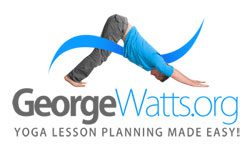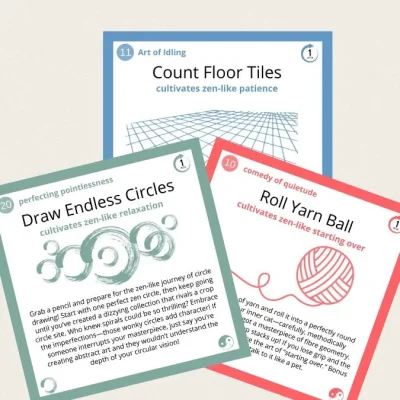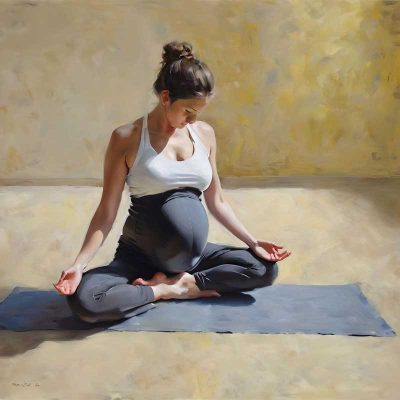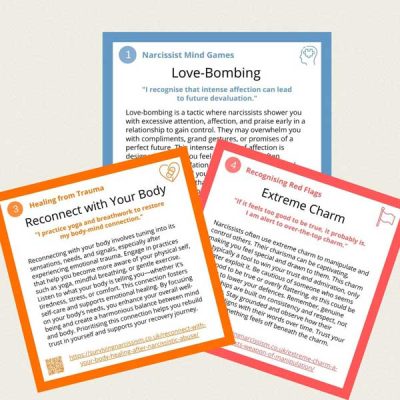How To Write Compelling Yoga Class Aims & Objectives
In this post, you’ll learn how to write compelling aims and objectives for your yoga classes, and why they are the rock stars of your lesson plan.
Below is a cheat sheet for creating yoga class aims and objectives. You can download and use it as a guide.
Aims & Objectives Are The Unsung Rock Stars Of Your Lesson Plan
Aims & Objectives are the unsung rock stars of your lesson plan!
If you’re in a hurry.
Stop!
Really, I mean it. Stop.
Slow down.
Read this post…slowly.
And read it multiple times…slowly.
And if you’re like me, come back to this post every time you create a new yoga lesson plan. Yes, even little old me, the creator of this Aims & Objectives post, uses it as a vital resource for my own yoga lesson planning.
If there’s only one blog post you read on my site, make it this one.
Without aims and objectives, a yoga class becomes just another run-of-the-mill generic exercise class. So, it’s well worth spending a few extra minutes crafting aims and objectives.
By setting aims and objectives, yoga teachers give themselves and their students a sense of purpose and direction. Having a sense of direction for each class is immensely liberating.
When creating a lesson plan, using the Online Yoga Lesson Planner, I usually start with an aim or two for the class, and write several objectives.
A yoga class “objective” is a milestone towards achieving the “aim”. Objectives need to be smart so that you know what progress it has made towards achieving the aim.
Objectives Need To Be Smart
Specific: clear and easy to understand
Measurable: able to be quantified
Achievable: possible to be attained
Realistic: not pie in the sky
Time-bound: associated with a specific time period (e.g. one class, or a six-week yoga course)
So, to put it in a nutshell…
“Aims are general goals. Objectives are specific goals.”
Aims Are General Goals
Aims are general goals.
Here are nine examples of general “aim” goals:
- Aims are general statements of intent.
- Aims indicate the overall goals of the session.
- Aims are written from the yoga teacher’s perspective.
- Aims state what the class or course will try to provide.
- Aims give us a path to follow and a destination to hit.
- Aims help your students become better yogis.
- Aims explain your intentions to students.
- Aims help motivate students to return to your class.
- Aims enable teachers to think about student progress.
Examples of AIM words that can be used:
| Ability | Ensure | Explore | Help | Promote |
| Broaden | Enhance | Enable | Inform | Provide |
| Create | Equip | Facilitate | Instruct | Show |
| Demonstrate | Explain | Foster | Introduce | Skills |
| Develop | Encourage | Give | Involve | Teach |
.
Examples of AIM phrases:
| Give practical experience | Develop the ability | Foster knowledge & understanding | Develop the ability to read & analyse | Give a grounding |
| Provide students with the necessary knowledge & skills to be able to | Provide a range of opportunities | Encourage independence | Demonstrate how to | |
.
Objectives Are Specific Goals
Objectives are specific goals.
Here are five examples of specific “objective” goals:
- Objectives increase clarity.
- Objectives help keep track of learning outcomes for students.
- Objectives contribute to the achievement of the aims.
- Objectives give your yoga class a clearly defined target.
- Objectives focuses attention on the big picture.
Examples of OBJECTIVE words that can be used:
| Knowledge | Attitudes | Skills |
| Analyse | Attend | Co-ordinate |
| Classify | Accept | Demonstrate |
| Compare | Become aware of | Discover |
| Define | Develop | Modify |
| Demonstrate | Decide | Move |
| Explain | Indicate | Perform |
| Justify | Influence | Practice |
| List | Organise | Share |
| Measure | Judge |
|
| Name/Recall | Revise |
|
| Predict | Face |
|
| Recognise | Listen |
|
| State |
|
|
| Summarise |
|
|
Learning objectives start with this phrase:
By the end of the session, the student will be able to…
Three Types Of Objectives:
Knowledge Objective
By the end of the session, the student will be able to name two postures in Sanskrit.
Attitude Objective
By the end of the session, the student will be able to indicate changes they can make to their diet.
Skill Objective
By the end of the session, the student will be able to practice pigeon pose safely.
Objectives can be fulfilled:
- In a single yoga class
- Over a 6 or 10-week course
- Over a year or more
Teaching methods that can help you attain your Objectives:
- Demonstration
- Discussion
- Games
- Lecture (talk)
- Repetition
- Practice
- Reading
- Repetition
- Talk-through
Examples Of Aims & Objectives
Below are a couple of examples of aims and objectives. I created these for yoga lesson plans that I created using the Online Yoga Lesson Planner.
Aims & Objectives For A Class: Example 1
Aims: Explore surrendering to slowness. Enable students to notice when they’re rushing (e.g. when they’re at work) and to give themselves permission to slow down – by slowing their breathing and movements.
Objectives: By the end of the lesson students should/will be able to:
- Perform the floor sequence
- Perform Kaya Kriya breath
- Perform mudras (preparing for sectional mudras and chants)
- Perform Full Breath with mudras and chanting
- Become aware of slowing the breath
- Move slowly from one pose to the next
- Stay in poses for longer before moving to the next one
- Judge what it feels like to allow slowness in
Aims & Objectives For A Class: Example 2
Aims: Encourage grit by exploring your physical edge
Objectives: By the end of the lesson students should/will be able to:
- Perform Sun Salutations B
- Perform Dog Down with a focus on the weight on the knuckles
- Perform mantra (OM GUM GANAPATEYIE NAMAHA)
- Perform INVERSIONS to end the asana session
- Perform upward abdominal lock
- Accept losing balance (exploring physical edge) in dancer pose
- Define grit (read sections from “Grit” book)
George’s Conclusion
My hope for you is that you’re now fully aware of the importance of writing compelling aims and objectives for your yoga classes, and why they are the rock stars of your lesson plan.
If you’re a yoga teacher, you can save 160 hours per year creating yoga lesson plans with the Online Yoga Lesson Planner.











